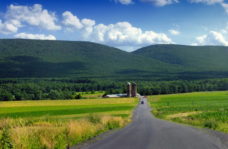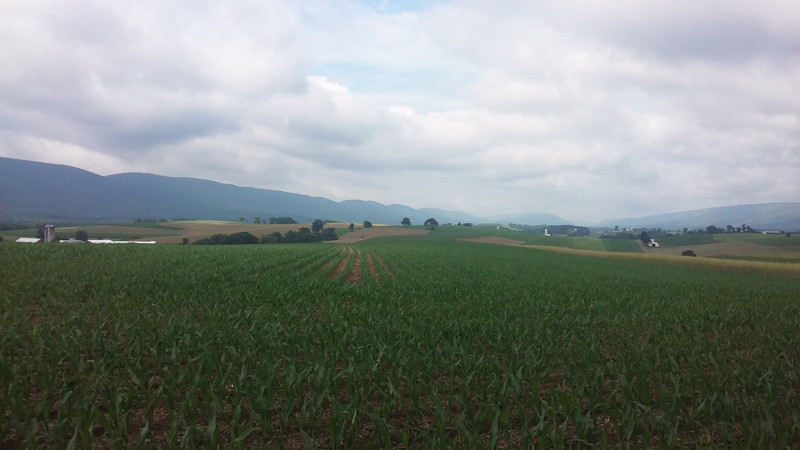 This is a companion piece to our initial Walk the Walk -- Drive the Drive materials which focused on the downtown context. This version looks at the specifics of occupying country roads together -- for all modes, whether biking, walking, driving, or buggying. This is still in draft form and we welcome input and comments. What do you think?
This is a companion piece to our initial Walk the Walk -- Drive the Drive materials which focused on the downtown context. This version looks at the specifics of occupying country roads together -- for all modes, whether biking, walking, driving, or buggying. This is still in draft form and we welcome input and comments. What do you think?
We all want a safer community. What can we do as individuals to build that safer community for all—for pedestrians, cyclists, buggy handlers, and drivers? A vibrant community encourages pedestrians, cyclists, and buggy drivers to be visible and exercise their rights and also recognizes motor vehicle drivers as a critical part of the same community. Walk It! Bike It! Lewisburg suggests that we can all Walk the Walk and Drive the Drive for safer country roads right now!
Local buggy drivers have their own channels for communications about traffic laws and ways to improve safety. They are quite good at complying with those strictures. When they are involved in a crash, it is almost invariably caused by impatient, inattentive, and unsafe motor vehicle drivers. Plain folk seem to be doing their part with reflectors and lights, blinders for their horses, and hugging the right shoulder. For the rest of us, here are some suggestions:
For safety on foot —
- Be aware of your rights and your responsibilities. (Check out our Crosswalk FAQ.)
- Use crosswalks and follow signals even when inconvenient, especially on state roads.
- While pedestrians have the right-of-way when crossing at un-signalized crosswalks, some drivers unfortunately remain unaware of this state law. Do not assume drivers will stop for you.
- Pedestrians do NOT automatically have right of way at signalized intersections – only when so indicated by the ‘walk’ light. Even then, watch for errant turning cars
- Enhance your visibility. Consider carrying a bright handkerchief to ensure you are visible to drivers. Understand that it’s often easier for you to see a driver than it is for the driver to see you.
- Always walk facing traffic as far to the left as practical in the absence of pedestrian accommodations (i.e. sidewalks or off-road paths).
- Claim your space but be prepared for inattentive drivers. When cars approach, use the shoulder if necessary and hug the left edge.
- Maintain single file when walking or running in a group on busy roads.
For safety by bike –
- Follow the rules of the road. Bikes have the legal right to claim the rightmost lane of travel. Act like a vehicle by riding with traffic and observing signs and signals. See PennDOT's page on Bicycle Laws.
- Be prepared for the reality of injudicious, inexperienced, and sometimes hostile drivers.
- Keep your bike in working order. Have functional brakes, properly inflated tires, and tight connections. Understand basic maintenance, like reseating a slipped chain or pumping up a tire. Keep a spare tube or patch kit in the event of a flat.
- Stay visible. Gear up with a particular focus on head protection, high visibility gear, and lights. Understand that bicyclists have a much clearer view of the road than drivers, particularly those driving at night as their view incorporates reflective surfaces, instrument lights, and visual obstructions.
- Pay attention.
- Know your route and don’t text or use a cell phone and ride.
- Watch for gravel and other unstable road surfaces and debris.
- Signal your intentions. Follow traffic lights and use hand signals, unless removing your hands from the handlebars would cause you to lose control.
- Control your vehicle. Don’t try to transport anything that would prevent you from having at least one hand on the handlebars at all times.
For safety by car –
- Avoid distracted driving. Don’t text and drive or manipulate a GPS (or do any of the other things that take your eyes from the road).
- Embrace driving in the community. Look out for your neighbors whether on foot, on a bike, in a buggy, or in a car. In such a small county, we are all neighbors. Think of the signs that say “Drive Like Your Kids Live Here” and then drive that way, because they do! In fact, show everyone how it should be done. Drive so that you are prepared to accommodate all road users. This means driving alertly, intentionally, with enough following distance to be able to respond to all modes of traffic on the road, and at a speed that is safe for those outside your vehicle, not just you!
- Be a professional passer. "Slow down, then go around." Make sure you have the clear sight distance to safely pass before crossing the yellow line. Many of our country roads curve around bends and over hills which significantly limits visibility. In those situations, wait until you reach a safe point to pass. Note that this could require you to come almost to a stop. If you are worried about inadequate following distance from drivers behind you, be sure you model proper following distance yourself.
- Recognize the current uses and users of our roads. If a road used to have less traffic, perhaps you drove faster and less carefully on it. But if it has more traffic on it now, drive on the road that is! Make a point of driving the posted speed limit (or less). As you arrive in more populated areas – and see more people driving, walking, and biking – that’s a good cue to slow down. Set cruise control to the posted speed limit on roads you have trouble slowing down fully for. It is easy for a car to go faster than the posted speed and this is a simple way to manage the tendency to speed.
- Don’t assume all other road users should leap out of your way. Cyclists have a right to use the roadway. And pedestrians may be able to retreat to the shoulder, but not if there isn’t one. Buggies minimize their time on the road. But all of them have a right to be there. Keep that in mind and do your part to share the road. It is, as they say, a two-way street and that respect goes both ways. You share with others and they share with you.
- State law requires you to leave 4’ clear when passing a cyclist. Think of it this way: 4’ of clearance plus the cyclist’s width amounts to about half a lane. On typical roads in our area, you are definitely going to have to perform a real pass. Wait for a suitable time and location before you cross the yellow line.
- Remember to do all of this even, or perhaps especially, when you’re in a rush. We need to remember to respect others even when it’s asking a little more of us.


